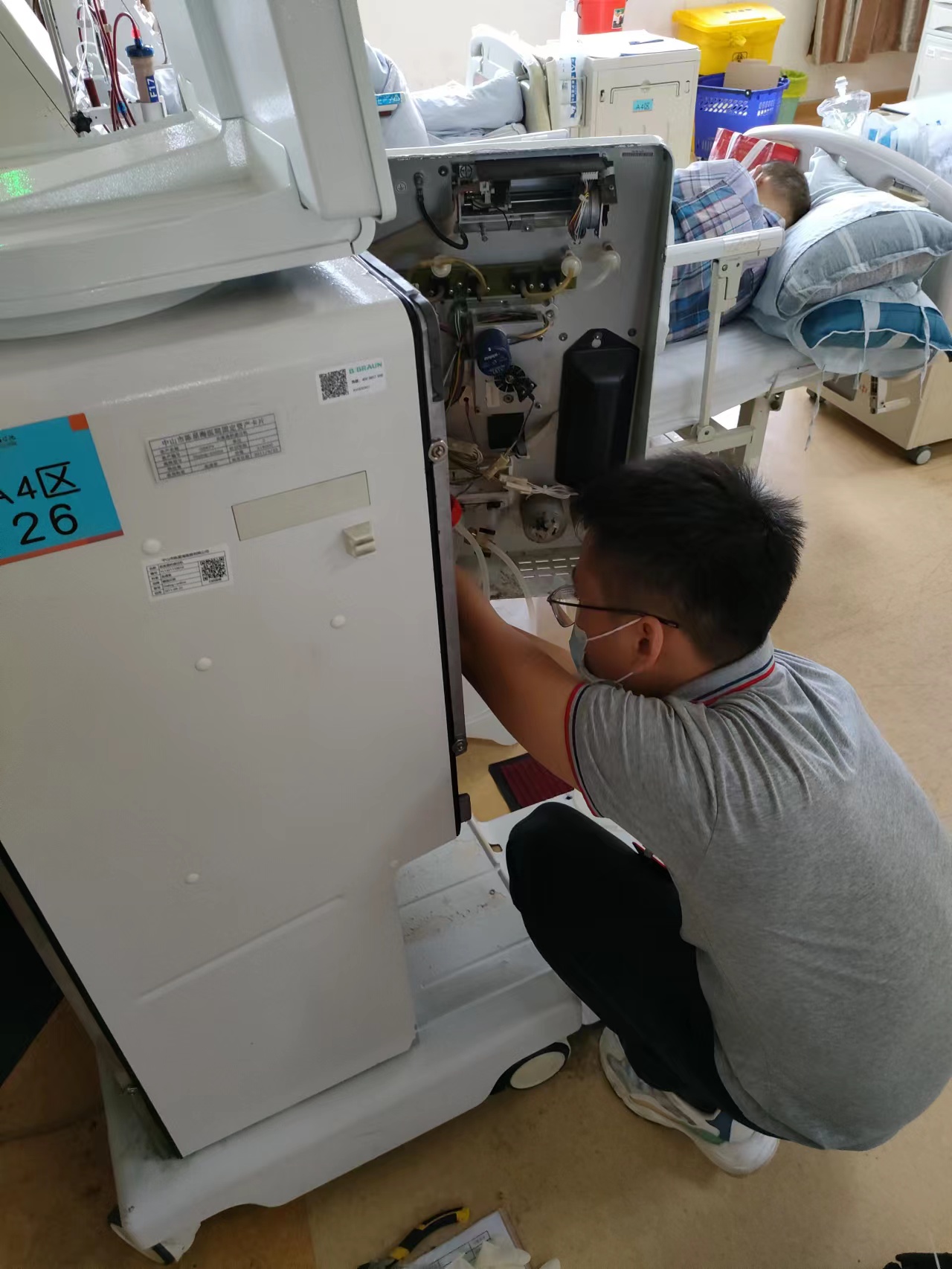【Share】Must Read for Beginners! Basics of hemodialysis
Basic knowledge of hemodialysis
1. Hemodialysis is referred to as "HD", hemofiltration is referred to as "HF", and hemodialysis is referred to as "HDF".
2. There are currently two types of kidney replacement therapy: kidney transplantation and dialysis therapy.
3. Normal adult kidney size is about 12cm×6cm ×3cm, weight about 120-150 grams.
4. Two important laboratory indicators reflecting kidney function are urea nitrogen and creatinine.
5. The temperature range of dialysate is 35 °C-41 °C. The normal setting is between 36.5 °C and 37.5 °C. Temperatures above 42 °C can produce hemolysis, and too low can cause chills in patients.
6. The main components of dialysate are sodium, potassium, calcium, magnesium, chlorine, acetate and bicarbonate.
7. Dialysis water and drinking water (tap water) are "not the same".
8. The method of water treatment includes: filtration, softening, activated carbon adsorption, deionization device, reverse osmosis device.
9. In a narrow sense, dialyzers are also called "artificial kidneys".
10. There are two kinds of anticoagulants commonly used in hemodialysis: unfractionated heparin and low molecular weight heparin.
11. Adverse reactions of unfractionated heparin: bleeding complications, thrombocytopenia, hypersensitivity reactions, hyperlipidemia, osteoporosis.
12. The most common of permanent vascular pathways is arteriovenous fistula.
13. The blood vessels on the side of the ostomy fistula "cannot do" the infusion pathway or blood collection.
14. Fistula and tremor at the arteriovenous fistula or hearing a vascular murmur are signs of patency of the internal fistula.
15. The internal fistula can only be used 4 to 8 weeks after it is established.
16. Do not use the arm on the side of the ostomy as a pillow when sleeping.
17. In order to promote the maturation of the internal fistula as soon as possible, patients can be encouraged to do fistula exercises 5-7 days after the internal fistula surgery, in the case of no blood leakage, no infection and good healing of the incision: use the operative finger to pinch the rubber fitness ball 3-4 times a day for 10 minutes each time.
18. Common complications of internal fistula: stenosis, bleeding, occlusion, infection, swollen hand syndrome, pseudoaneurysm, stealing syndrome, high output heart failure.
19. For patients with general maintenance hemodialysis, the dialysis time is at least 10-12 hours per week, and those who have the condition can be extended to 15 hours.
20. The adverse consequences of insufficient dialysis are: lack of energy, poor sleep, nausea and vomiting, increased blood pressure, edema, anemia is difficult to correct, severe ammonia in the mouth, and itchy skin.
21. Common acute complications in dialysis are: hypotension, muscle spasms (convulsions), imbalance syndrome, chills, fever, heart failure, arrhythmias, hypertension.
22. The long-term complications of hemodialysis are: renal bone disease, amyloidosis, carpal tunnel syndrome, metastatic calcification, acquired renal cysts, osteoporosis, hypotension, malnutrition, hyperlipidemia.
23. Nutritional needs of hemodialysis patients: intake of sufficient protein and calories, control of fat and cholesterol intake, restriction of sodium ion intake, restriction of phosphorus intake, intake of potassium ions, control of liquid intake, appropriate amount of sugars and oils, calcium and vitamin supplementation.
24. Vegetables and fruits with high potassium content are: mushrooms, sea vegetables, beans, lotus seeds, oranges, peaches, apples, pineapples, star fruit, bananas, cherries, rambutan, grapes, dragon fruit, melons, etc.
25. Foods high in phosphorus are: egg yolk, pork liver, pig intestine, soybean, mung bean, peanut, pistachio, almond, melon seed, milk powder, chocolate, walnut, cashew, chestnut, sesame and so on. 26. Foods with high salt content are: pickles, pickles, pickles, bacon, ham, sausages, salted eggs, bean paste, etc.
27. The weight of the two dialysis intervals before and after dialysis patients shall not exceed 4% of the original body weight or the daily weight gain shall not exceed 1Kg.
28. Erythropoietin can be used to treat anemia in uremia patients, and the laboratory test mainly looks at hemoglobin.
29. Complications that erythropoietin can cause: hypertension, thrombosis, hypersensitivity reactions.
30. Common methods of blood purification are: hemodialysis, hemofiltration, hemodialysis filtration, blood perfusion, plasma exchange.
31. Disadvantages of peritoneal dialysis: complications of intubation, peritonitis, abdominal pain, abdominal wall hernia, hyperlipidemia and obesity, protein loss.
